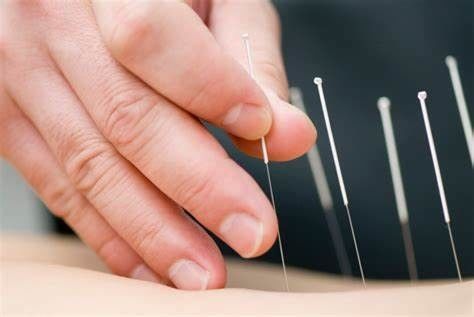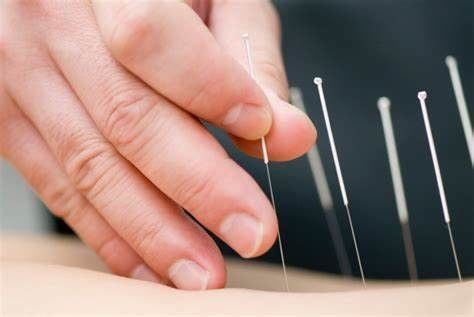
Customizable Stainless Steel Disposable Acupuncture Needles With Guide Tube
-
Highlight
Guide Tube Acupuncture Needles
,Stainless Steel Disposable Acupuncture Needles
,Customizable Acupuncture Needles
-
LogoAccept Customized Logo
-
HygieneDisposable Or Easy To Clean And Disinfect
-
SterilizationSterile Or Non-sterile Options
-
Size16cm*25m 18cm*25m18cm*30m 40cm*25m
-
TypeWith Guide Tube Or Without Guide Tube
-
Packing10pcs/bag
-
Place of OriginChina
-
Brand NameAILE
-
CertificationISO/CE
-
Model Number16cm*25m 18cm*25m18cm*30m 40cm*25m
-
Minimum Order Quantity60000pcs
-
PriceNegotiable
-
Packaging DetailsDetails 100pcs/pack, Depend on your requirement
-
Delivery Time15-30days
-
Payment TermsL/C, T/T
-
Supply Ability100000 Bag/Bags per Month
Customizable Stainless Steel Disposable Acupuncture Needles With Guide Tube
Customizable Stainless Steel Disposable Acupuncture Needles with Guide Tube
Acupuncture is a traditional Chinese medical therapy that involves stimulating specific points on the body using specially designed acupuncture needles.
The uses of acupuncture needles are diverse within the practice of traditional Chinese acupuncture. Here are some common applications of acupuncture needles:
- Pain management: Acupuncture needles can be used to alleviate various types of pain, including headaches, neck and shoulder pain, lower back pain, and joint pain. By stimulating specific acupuncture points, acupuncture can promote blood circulation, reduce inflammation, and regulate the nervous system, thereby relieving pain.
- Internal medicine conditions: Acupuncture needles are also employed in regulating the functions of internal organs. They can be used for digestive system issues such as indigestion, stomach pain, and constipation. Additionally, acupuncture can assist in the treatment of respiratory, cardiovascular, and urological disorders, among other internal medicine problems.
- Neurological issues: Acupuncture needles can have a modulating effect on the nervous system. They can be used to alleviate anxiety, depression, insomnia, and other psychological stress-related problems. Furthermore, acupuncture can aid in the recovery of neurological functions, such as in post-stroke rehabilitation.
- Gynecological issues: Acupuncture needles find wide application in the realm of gynecological disorders. They can be used to regulate menstrual cycles, alleviate menstrual pain and discomfort, and improve infertility issues. Acupuncture can also support women's health during pre-conception, pregnancy, and postpartum periods.
- Rehabilitation and sports injuries: Acupuncture needles can be employed in rehabilitation treatments and managing sports injuries. They can help accelerate tissue repair and recovery, reduce pain, and restore functionality. Acupuncture can also be used for performance enhancement and prevention of sports-related injuries in athletes.
It is important to note that acupuncture treatments should be performed by trained professionals with relevant qualifications. Before undergoing acupuncture treatment, it is advisable to consult with a qualified doctor or acupuncturist to ensure the selection of appropriate treatment methods and achieve optimal results.
![]()
There are various types of acupuncture needles used in the practice of acupuncture. Here are some common types:
Stainless Steel Needles:
Stainless steel needles are the most commonly used type of acupuncture needles. They are durable, flexible, and have good conductivity. Stainless steel needles are available in a range of lengths and diameters to suit different acupuncture techniques and treatment areas.
- Disposable Needles: Disposable acupuncture needles are designed for single-use and come individually packaged. They are made of stainless steel and are pre-sterilized, ensuring hygiene and safety. Disposable needles reduce the risk of infection and eliminate the need for sterilization between uses.
- Gold/Silver-Plated Needles: Gold or silver-plated acupuncture needles are coated with a thin layer of gold or silver. These needles are believed to have additional therapeutic benefits due to the properties of these precious metals. Gold/silver-plated needles are often used for specific conditions or in cases where enhanced stimulation is desired.
- Filiform Needles: Filiform needles are the standard type of acupuncture needles used for most treatments. They are solid, thin, and have a sharp tip for easy insertion into the skin. Filiform needles can be made of stainless steel or other metals and are available in various lengths and gauges.
- Intradermal Needles: Intradermal needles, also known as "press needles" or "seeding needles," are small acupuncture needles that are attached to adhesive patches. They are placed on specific acupuncture points and can be left in the skin for an extended period. Intradermal needles are commonly used for chronic conditions, pain management, and cosmetic acupuncture.
- Three-Edge Needles: Three-edge needles, also called "triangular needles," have a triangular-shaped tip instead of a sharp point. They are often used in scalp acupuncture and for specific techniques targeting certain conditions. The triangular shape of the needle allows for precise and effective stimulation.
The usage of acupuncture needles in acupuncture treatment involves the following steps:
- Point selection: The acupuncturist identifies the specific acupuncture points that will be targeted during the treatment. Acupuncture points are selected based on the patient's condition and treatment goals. These points are located along meridians or energy pathways in the body.
- Needle insertion: The acupuncturist holds the acupuncture needle with a gentle grip and inserts it into the chosen acupuncture point. The insertion technique may vary depending on the desired effect and the acupuncturist's training and style. The needle is typically inserted swiftly and smoothly into the skin.
- Needle manipulation: Once the needle is inserted, the acupuncturist may perform various needle manipulation techniques to stimulate the acupuncture point and achieve the desired therapeutic effect. These techniques include rotation, lifting and thrusting, gentle vibration, or a combination of these movements. The acupuncturist adjusts the technique based on the patient's response and treatment goals.
- Needle retention: After manipulation, the acupuncture needle is left in place for a certain duration. The duration can vary depending on the treatment plan, ranging from a few minutes to around 30 minutes or more. During this time, the patient may rest comfortably while the acupuncture needle stimulates the acupuncture point.
- Needle removal: After the desired retention time, the acupuncturist gently removes the acupuncture needle from the acupuncture point. The removal is typically quick and painless. The acupuncturist may use a slight twisting motion while withdrawing the needle to minimize discomfort.
Throughout the entire process, the acupuncturist ensures proper hygiene and safety by using sterile, disposable needles or properly sterilized reusable needles. The treatment may involve the use of multiple acupuncture needles inserted at different acupuncture points, depending on the individualized treatment plan.
![]()
Here are some safety and hygiene precautions to consider during acupuncture treatments:
- Seek a qualified acupuncturist: Ensure that you are receiving acupuncture treatment from a qualified practitioner who has received proper training and holds relevant credentials. Look for experienced and reputable acupuncturists, and consider recommendations from doctors, friends, or certification from reputable organizations.
- Use disposable acupuncture needles: Ensure that your acupuncturist uses disposable acupuncture needles. These needles are pre-sterilized and are discarded after each use. Disposable needles help reduce the risk of cross-infection and ensure the hygiene and safety of the treatment.
- Ensure sterilization and cleanliness: If reusable acupuncture needles are used, the acupuncturist must follow proper sterilization and cleaning procedures to ensure the hygiene of the needles. Specialized sterilization equipment and methods should be used, following the correct sterilization time and procedures to prevent the spread of bacteria, viruses, or other pathogens.
- Follow point selection and needle insertion guidelines: Acupuncturists should accurately select acupuncture points and determine the appropriate depth of needle insertion based on the condition and treatment goals. They should follow accurate anatomical knowledge and techniques to avoid injury to vital tissues or trigger adverse reactions.
- Maintain personal hygiene: Acupuncturists should maintain good personal hygiene habits, including handwashing, wearing gloves, and appropriate use of masks. This helps reduce the risk of cross-infection and ensures the cleanliness and hygiene of the treatment environment.
- Communication and informed consent: Acupuncturists should engage in thorough communication with patients, explaining the treatment process, potential risks, and expected outcomes. Patients should provide informed consent and have the right to refuse or discontinue treatment.
- Observation and response management: Acupuncturists should closely observe the patient's reactions and feedback, promptly addressing any discomfort or adverse reactions that may occur. During the treatment, patients should actively communicate any discomfort or concerns to the acupuncturist.
![]()
What is the difference between dry needling and acupuncture needles?
Dry needling and acupuncture are two different therapeutic techniques that involve the use of needles, but they differ in their principles, goals, and application.
Dry Needling:
Dry needling is a technique used by healthcare professionals, such as physical therapists, chiropractors, or osteopaths, to treat musculoskeletal pain and dysfunction. It involves the insertion of thin needles into specific trigger points or tight bands of muscles to stimulate a localized twitch response. The goal of dry needling is to release muscular tension, improve blood flow, and alleviate pain or dysfunction in the affected area.
In dry needling, the needles used are typically solid filament needles, similar to acupuncture needles. These needles are usually thinner than hypodermic needles used for injections and are designed to penetrate the skin and reach deeper muscle layers. The depth and angle of needle insertion may vary depending on the targeted muscle or trigger point being treated.
Acupuncture:
Acupuncture is a traditional Chinese medicine practice that has been used for thousands of years to promote health and treat various conditions. It involves the insertion of thin needles at specific acupuncture points along the body's meridians or energy pathways. The goal of acupuncture is to restore the balance of energy flow in the body and promote overall well-being.
Acupuncture needles are typically thin, sterile, and flexible, and they can be made of stainless steel or other materials. The needles used in acupuncture are often inserted superficially into the skin at various depths depending on the acupuncture points being targeted. The manipulation techniques, such as rotation, lifting, and thrusting, are applied to stimulate the acupuncture points and achieve therapeutic effects.
Key Differences:
Purpose and Approach: Dry needling primarily focuses on addressing muscular pain and dysfunction by targeting trigger points or tight muscles. Acupuncture aims to restore the balance of energy flow in the body and treat a wide range of conditions.
Theoretical Framework: Dry needling is based on Western medicine concepts and anatomy, while acupuncture is rooted in traditional Chinese medicine principles.
Training and Regulation: Dry needling is typically performed by healthcare professionals who have received specific training in the technique. Acupuncture, on the other hand, is practiced by licensed acupuncturists who undergo extensive training in acupuncture theory, diagnosis, and treatment.

